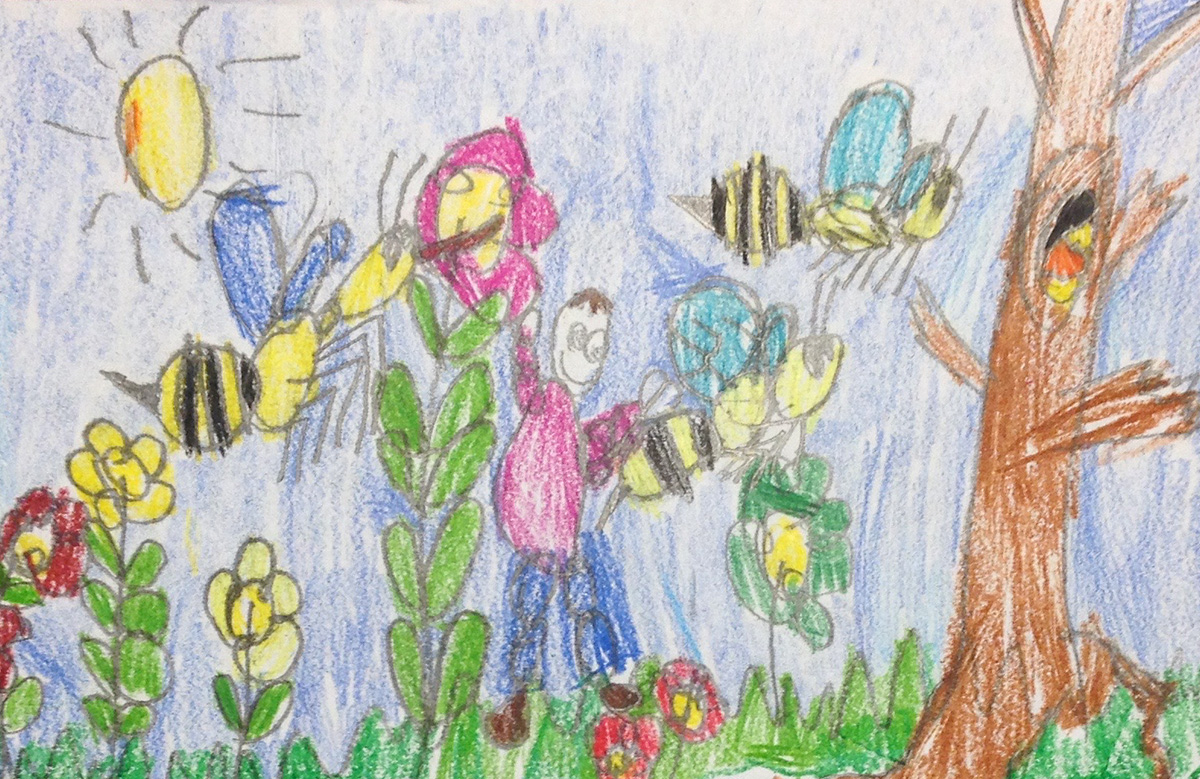Chapter 4: Why Bees? Writing Nonfiction Together In Kindergarten
4.6 The Sweet Reward

It’s the “conference” portion of our Writing Workshop time, and I’m looking over the shoulder of William. As I jot down notes about the many fact boxes he has chosen to include in his work and the descriptive language he has used like, “Barbs are attached to the stinger.”, he looks up and says, “I am going to be writing nonfiction for a long time.” “Why?” I ask. His response: “The more animals we study, the more nonfiction I write!” (Event recorded from my classroom, May 2015).
I have always been an inquirer of teaching, specifically, my own teaching practice. Every day, every moment, I am reflecting and making decisions about how to approach my work with my students in a way that is most beneficial to them as learners. Although the original decision to study bees was content driven, my personal journey as an inquirer of science as well, has made me believe that Kindergarten children can and should be engage with complex, rich content in the classroom.
I am fortunate that Kindergarten is a full day program in my district because I have found that in order to provide a high quality nonfiction writing program guided by student inquiry, it takes every part of our day. From engaging in thoughtful discussions during read aloud times around mentor texts, to learning about the conventions of writing and encoding text during Community Writing; from internalizing scientific content during Shared Reading sessions, to research trips, dramatizing, watching video clips and engaging in hands-on activities during science; from modeling drawing and writing during Writing Workshop time to celebrating and giving feedback as a community of writers, we were learning to become writers of nonfiction.
As readers, my students learned how to derive meaning and content from nonfiction text, and they understood how to ask questions and summarize information. As writers, they learned how to organize a nonfiction bee report, use fact boxes to enhance concepts, report information through words and pictures and to use realistic drawings and diagrams to report information to their audience. Through inquiry, they learned that bees are necessary for human survival and not to be feared. They learned how to write to an audience and how writing can be such informative, powerful work! I have found that learning to write nonfiction is time consuming and messy. I am constantly making decisions about what the most developmentally appropriate way to handle the complexities of teaching the content are. However, the journey, the process, is sweet and never-ending. Just this spring, as I observed the bees among my vinca and crocuses, I couldn’t resist looking for their pollen baskets. And guess what?! The pollen baskets were blue! Next year, I’ll be looking at bees even more closely and I already have my first question.